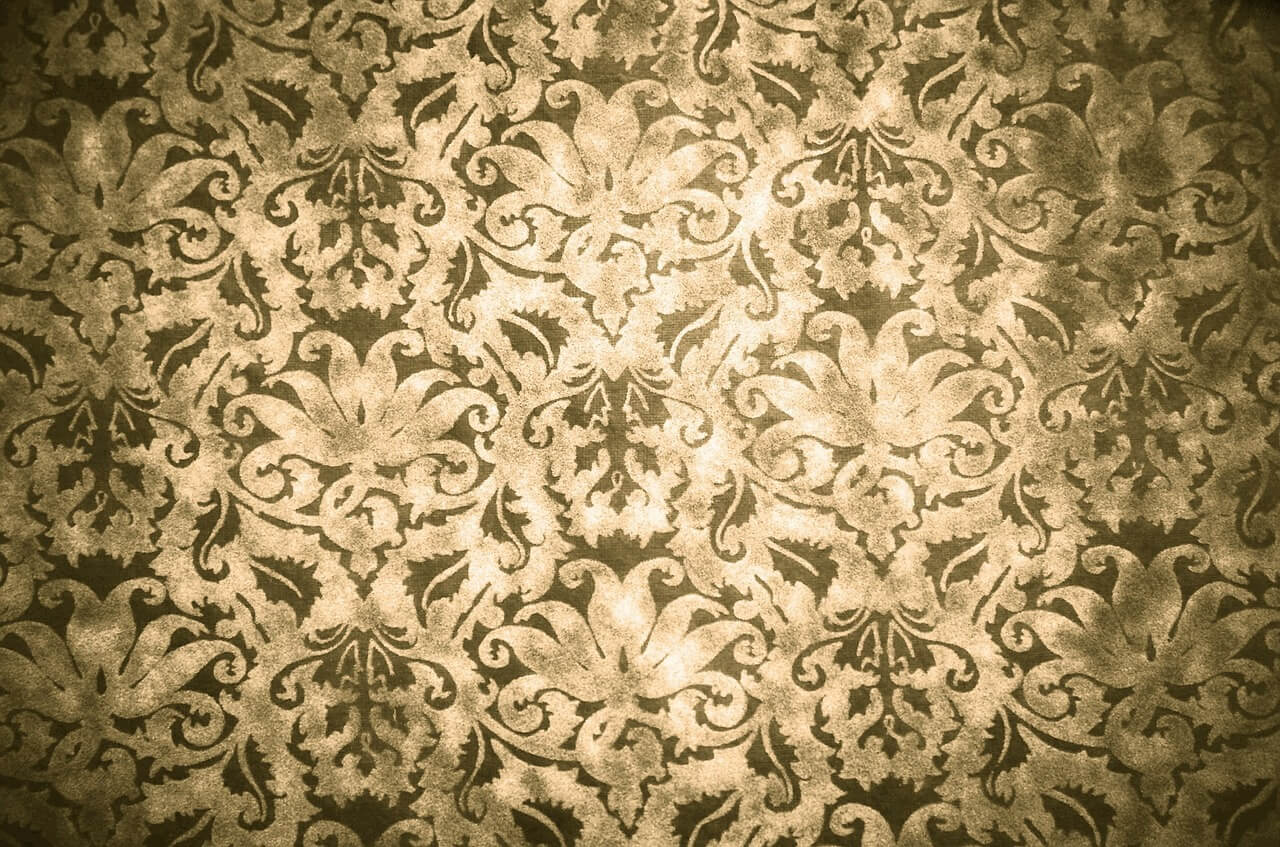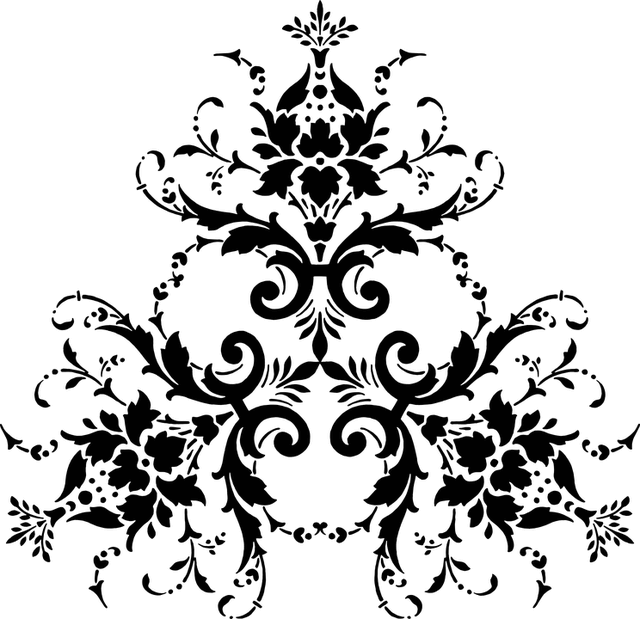What is damask? Information on damask construction, colors, types and history. Dress damask, Upholstery damask and table damask.
Damask; is a patterned reversible fabric that became popular in Damascus in the Middle Ages. Originally, damask was made of silk, with elaborate woven designs. It was used in Europe for dresses for the well-to-do and nobility and for decorative hangings in their homes. Damask is now made of a variety of fibers, including linen, cotton, rayon, acetate, nylon, and wool, as well as silk. It is commonly used for tablecloths, upholstery, and dresses.

Source: pixabay.com
Construction:
Damask is a flat fabric that is generally woven on a Jacquard loom. Sometimes the design appears to be raised, but its flatness can easily be ascertained by rubbing the fingers over the fabric. The patterns are produced by varying the satin weave in which the smooth shiny surface results from closely spaced warp threads that “float” over several filling threads before passing under one. For example, in a 5-harness satin weave, each warp thread alternately floats over four filling threads and under one.
The satin weave is varied so that the design “areas on one side of the fabric are woven with floating warp threads and the ground is woven with floating filling threads. On the reverse side of the fabric the design is.woven with floating filling threads and the ground is woven with floating warp threads. Damasks are also made by varying twill and tabby weaves.
Colors:
When the same kind of thread is used for both the warp and filling, the design is brought out in a subtle and pleasing way solely by the difference in light reflection of the contrasting weaves. To make the pattern more prominent, the warp threads may be dyed one color, and the filling threads a second color. Sometimes two filling colors are used. If the colors are changed properly with the design, the fabric suggests a brocade, which has extra threads.
Table Damask:
The best quality table damasks are made from linen. Other common table damasks are made with a cotton warp (plain or mercerized) and a rayon or acetate filling. Table damasks are often bleached to produce the white-on-white effect. They are usually made using a single damask, 5-harness, satin weave, or a double damask, 8-harness, satin weave. The 5-harness damasks are lighter in weight and less lustrous than the 8-harness damasks. Double damask has more threads per inch than single damask.

Source: pixabay.com
Upholstery Damask:
Generally heavier than table damask, upholstery damask is usually made of cotton, wool, or synthetic fibers, or of combinations of these materials. If a Dobby loom is used, 25 harnesses may be employed. With a Jacquard loom, the equivalent of 1,300 harnesses is commonly used.
Dress Damask:
Dress damask is lighter in weight than table damask or upholstery damask. It is occasionally made of silk. Filament nylon, rayon, and acetate are also suitable materials for dress damasks and are less expensive and more durable than silk. Fine yarns and a high thread count are needed to produce a fabric that drapes well. Dress damasks are sometimes bleached to produce the white-on-white effect. Metallic yarns are sometimes used.
History:
Damask weaving was invented by Chinese silk weavers, possibly as early as 1000 b. c. However, the technique of weaving damask was not brought to the Middle East and Europe until the Middle Ages. Damask reached its greatest popularity during the 15th, 16th, and 17th centuries. The weaving of linen damask tablecloths and napkins began in northern Europe and became a profitable business in the 16th century.
Damask was once a fabric that only the rich oould afford, but modern weaving techniques and the development of synthetic fibers have made it a common household material.